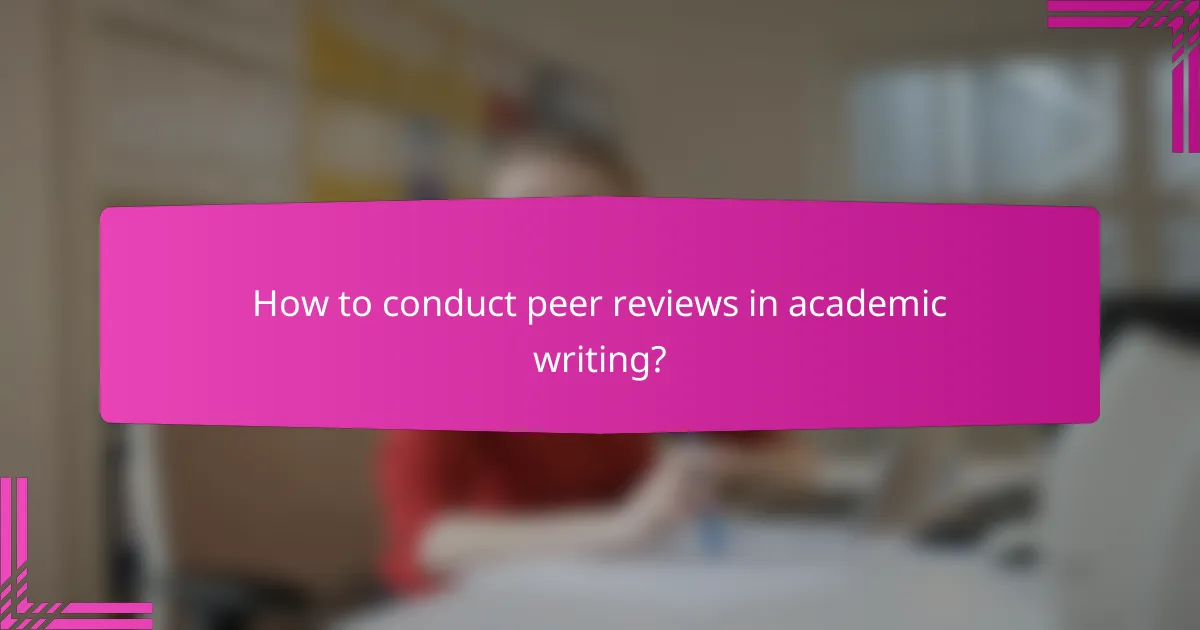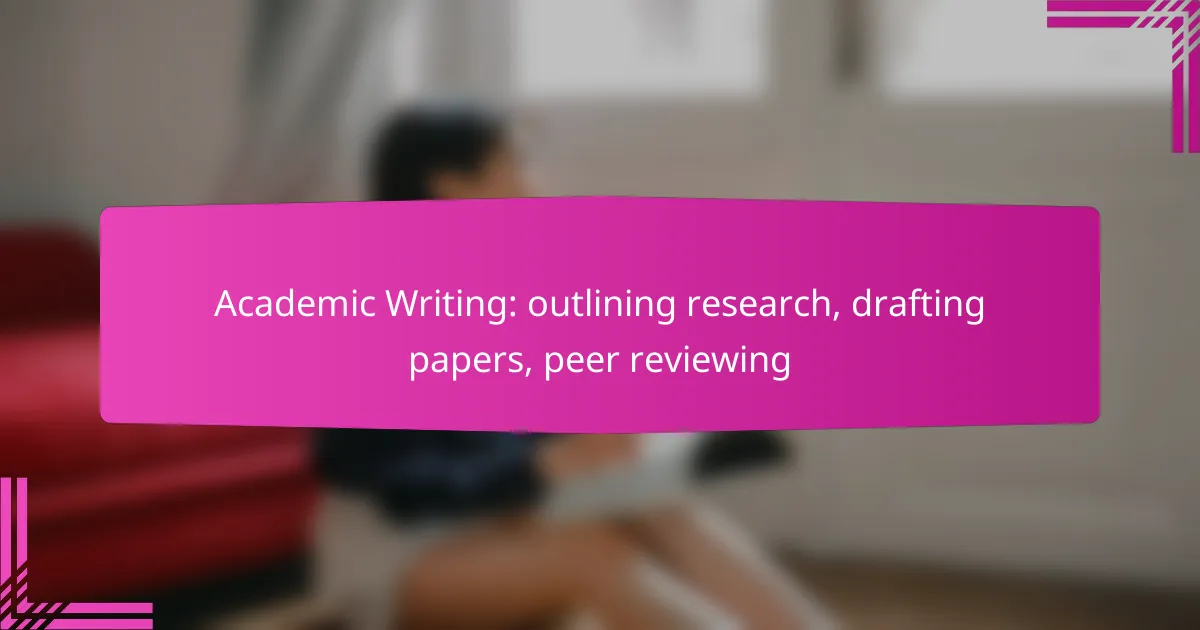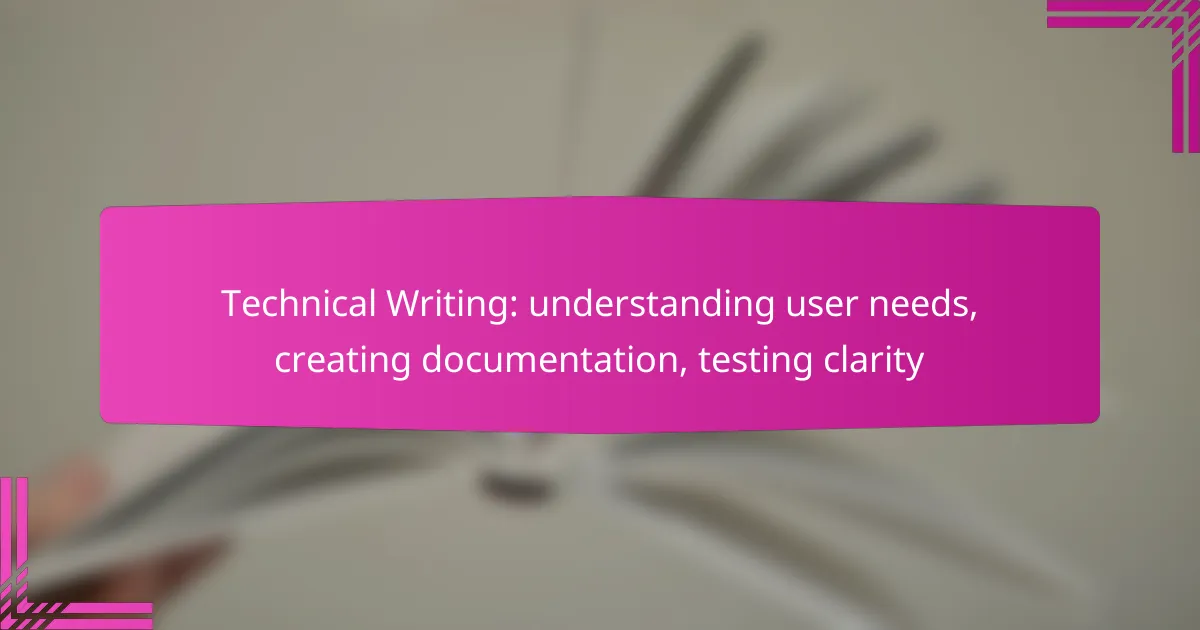Academic writing is a structured process that encompasses outlining research, drafting papers, and conducting peer reviews. A well-organized outline serves as a roadmap for your writing, while effective drafting practices enhance clarity and credibility. Peer reviews play a crucial role in upholding academic standards by offering constructive feedback and insights for improvement.

How to outline research effectively in Australia?
Outlining research in Australia involves creating a clear framework that guides the writing process. An effective outline helps organize thoughts, ensures logical flow, and highlights key arguments or findings.
Use structured templates
Structured templates provide a consistent format for outlining research. They can include sections for the introduction, literature review, methodology, results, and conclusion. Utilizing these templates helps maintain focus and ensures that all necessary components are addressed.
Many universities in Australia offer specific templates tailored to their academic standards. Check with your institution for recommended formats that align with local guidelines.
Incorporate key themes
Identifying and incorporating key themes is crucial for a coherent outline. Start by determining the main ideas or arguments that will support your research question. This approach allows you to organize your outline around these central themes, making it easier to develop your paper.
Consider using bullet points or numbered lists to clearly delineate each theme and its supporting details. This visual structure can help you quickly identify gaps in your research or areas needing further development.
Engage with academic databases
Engaging with academic databases is essential for gathering relevant literature and data. In Australia, databases like JSTOR, Scopus, and Google Scholar provide access to a wealth of peer-reviewed articles and research papers. Use these resources to inform your outline and ensure your arguments are well-supported.
When researching, take notes on key findings and how they relate to your themes. This practice not only enriches your outline but also streamlines the drafting process by providing ready-made references for your paper.

What are the best practices for drafting academic papers?
Best practices for drafting academic papers include adhering to specific formatting guidelines, utilizing citation management tools, and implementing clear thesis statements. These practices enhance the clarity, organization, and credibility of your work.
Follow specific formatting guidelines
Adhering to specific formatting guidelines is crucial in academic writing. Different disciplines often have unique requirements, such as APA, MLA, or Chicago style, which dictate aspects like font size, margins, and citation formats.
To ensure compliance, consult the relevant style guide for your field. For instance, APA requires a title page and abstract, while MLA emphasizes in-text citations and a Works Cited page. Ignoring these guidelines can lead to lower grades or rejection from journals.
Utilize citation management tools
Using citation management tools can streamline the process of organizing references and formatting citations. Tools like Zotero, EndNote, or Mendeley allow you to collect, manage, and cite sources efficiently, saving time and reducing errors.
These tools often integrate with word processors, enabling you to insert citations and generate bibliographies automatically. Familiarize yourself with at least one tool to enhance your writing workflow and ensure accurate citations.
Implement clear thesis statements
A clear thesis statement is essential for guiding your academic paper. It should succinctly convey the main argument or purpose of your work, typically appearing at the end of the introduction.
To craft an effective thesis statement, ensure it is specific and arguable. For example, instead of stating “Social media affects communication,” consider “Social media has transformed interpersonal communication by fostering superficial connections over meaningful relationships.” This clarity helps readers understand your focus and direction.

How to conduct peer reviews in academic writing?
Conducting peer reviews in academic writing involves evaluating a colleague’s work to ensure quality and rigor. It is essential for maintaining academic standards and providing authors with valuable insights to improve their research.
Establish clear criteria for evaluation
Before starting a peer review, establish specific criteria to guide your evaluation. Common criteria include originality, methodology, clarity, and relevance to the field. Having clear benchmarks helps maintain objectivity and ensures that all critical aspects of the paper are assessed.
Consider creating a checklist that outlines these criteria. This can include questions like: Does the paper address a significant problem? Is the methodology sound? Are the conclusions supported by the data? A structured approach can streamline your review process.
Provide constructive feedback
Constructive feedback is crucial for helping authors improve their work. Focus on both strengths and weaknesses, providing specific examples to illustrate your points. For instance, if a section lacks clarity, suggest ways to enhance it rather than just pointing out the issue.
Be diplomatic in your language. Use phrases like “consider revising” or “it may be beneficial to” rather than making absolute statements. This encourages a positive dialogue and fosters a collaborative atmosphere for improvement.
Utilize peer review platforms like Publons
Peer review platforms, such as Publons, facilitate the review process by providing a structured environment for feedback and tracking contributions. These platforms often allow reviewers to manage multiple reviews and access resources that can enhance their evaluation skills.
Using such platforms can also help you build a professional profile, showcasing your expertise and contributions to the academic community. This can be beneficial for career advancement and networking within your field.

What are the common challenges in academic writing?
Common challenges in academic writing include overcoming writer’s block and managing time effectively. These obstacles can hinder the writing process and affect the quality of research papers.
Overcoming writer’s block
Writer’s block is a frequent issue that can stall the academic writing process. To combat this, try setting small, achievable goals, such as writing a single paragraph or outlining key points for a section.
Another effective strategy is to change your environment. A new setting can spark creativity and help you break free from mental barriers. Additionally, consider free writing for a few minutes to generate ideas without self-editing.
Managing time effectively
Effective time management is crucial for successful academic writing. Start by creating a detailed schedule that allocates specific blocks of time for research, drafting, and revisions. This structured approach helps ensure that you stay on track and meet deadlines.
Utilize tools like calendars or project management apps to keep your tasks organized. Prioritize your writing tasks based on deadlines and complexity, and avoid multitasking, as it can reduce overall productivity. Aim for focused writing sessions of about 25 to 50 minutes, followed by short breaks to maintain concentration.

How to choose the right academic writing tools?
Selecting the right academic writing tools is crucial for enhancing productivity and ensuring quality in your research and writing processes. Consider factors such as functionality, user experience, and compatibility with your specific academic needs.
Evaluate software features
When evaluating academic writing tools, focus on essential features that support your writing process. Look for functionalities like citation management, collaborative editing, and formatting options that align with your institution’s requirements.
For instance, tools like Zotero and EndNote offer robust citation management, while platforms like Google Docs facilitate real-time collaboration. Assess whether the software integrates well with other tools you use, such as reference managers or data analysis software.
Consider user reviews
User reviews provide valuable insights into the effectiveness and usability of academic writing tools. Check platforms like G2 or Capterra for feedback from other researchers and students who have used the software.
Pay attention to comments regarding ease of use, customer support, and any recurring issues. A tool that receives consistent praise for its user interface and reliability is likely to enhance your writing experience significantly.

What are the key elements of a strong thesis statement?
A strong thesis statement clearly articulates the main argument of a paper and provides a roadmap for the reader. It should be specific, debatable, and reflect the scope of the research or argument presented.
Clarity and conciseness
Clarity and conciseness are essential for a strong thesis statement. Use straightforward language and avoid jargon or overly complex sentences. Aim for one to two sentences that encapsulate your main point without unnecessary words.
For example, instead of saying, “The study of climate change is important for understanding environmental issues,” a clearer thesis would be, “Climate change significantly impacts global food security.” This version is direct and focused.
Argumentative strength
Argumentative strength refers to how convincingly a thesis statement presents a claim that can be supported with evidence. A strong thesis should be assertive and take a clear stance on an issue, inviting discussion and analysis.
Consider the difference between a weak thesis, such as “There are many problems with education,” and a strong one: “The current education system fails to prepare students for the workforce due to outdated curricula.” The latter presents a specific argument that can be supported with research and examples.

How to improve academic writing skills?
Improving academic writing skills involves practicing clear expression, structuring arguments effectively, and engaging in peer feedback. Focus on outlining your ideas, drafting with clarity, and revising based on constructive criticism.
Outlining research
Outlining research is a crucial step in academic writing that helps organize thoughts and structure arguments. Start by identifying your main thesis and key points, then break them down into subpoints. This hierarchical structure allows for a clear flow of ideas and ensures that all relevant aspects of the topic are covered.
Use bullet points or numbered lists to create a visual representation of your outline. For instance, a simple outline might include sections like Introduction, Literature Review, Methodology, Results, and Discussion. This method not only clarifies your writing path but also aids in identifying gaps in your research.
Drafting papers
Drafting papers involves translating your outline into a coherent text. Begin with a strong introduction that presents your thesis and outlines the main arguments. Each paragraph should start with a topic sentence that relates to your thesis, followed by evidence and analysis.
Keep your writing concise and focused. Aim for clarity by using straightforward language and avoiding jargon unless necessary. A good rule of thumb is to write in short paragraphs, ideally 3-5 sentences each, to maintain reader engagement and facilitate understanding.
Peer reviewing
Peer reviewing is an essential part of the academic writing process that enhances the quality of your work. Engaging with peers allows for diverse perspectives and constructive feedback, which can highlight strengths and weaknesses in your writing. When reviewing, focus on clarity, argument strength, and adherence to academic standards.
To conduct an effective peer review, consider using a checklist that includes criteria such as clarity of thesis, organization of ideas, and quality of evidence. Provide specific suggestions for improvement rather than vague comments. This collaborative effort not only improves individual papers but also fosters a supportive academic community.



